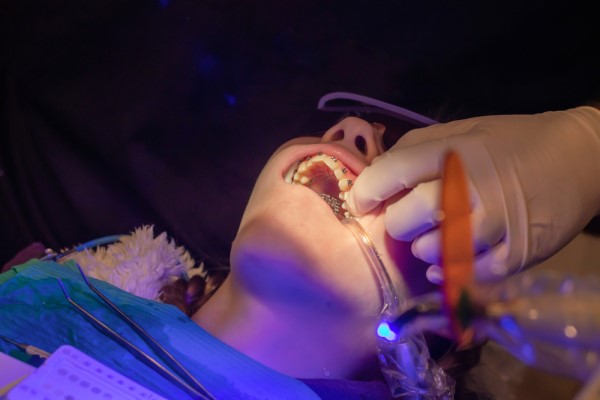When Dental Bonding Is Used as a Dental Restoration

Dental bonding is one of the more popular forms of dental restoration due to the cosmetic benefits they offer and the minimally invasive treatment process. This review discusses why a dentist may recommend dental bonding over alternative dental restoration options to repair a damaged, stained, or misshapen tooth.
What types of concerns can dental bonding fix?
The most common types of concerns that dental bonding can fix are tooth chips and cracks, worn teeth, teeth that are too short (either naturally or due to damage), stained teeth, and gaps.
Teeth chips and cracks
Chips and cracks are similar concerns that typically involve trauma to teeth. Dental bonding can repair chipped and cracked teeth by covering the damaged area. This not only protects the underlying layers of teeth but also improves the shape and overall appearance as well.
Worn teeth
Teeth can become worn down over time due to poor oral hygiene and/or bruxism. When this occurs, dental bonding may be recommended as a dental restoration option to restore the length, function, and oral health of worn teeth. However, bonding is typically not recommended for the chewing surfaces of premolars and molars, which are the teeth that are the most highly affected by bruxism.
Short teeth
In some cases, teeth are naturally short or may appear as if they are too short due to an alignment concern. Dental bonding can lengthen teeth that are naturally too short and provide the patient with a smile that is more symmetric and even.
Teeth stains
Dental bonding can also address teeth stains as well, which is primarily a cosmetic concern. The composite resin material that is used for dental bonding is the ideal shade of teeth, and the dentist can match it so it is indistinguishable from the patient’s natural teeth. Dental bonding is used as a dental restoration for stained teeth especially when in-office whitening is not enough to improve the shade to an optimal level.
Teeth gaps
Teeth gaps are not a concern that requires restoration, but some patients desire to fill the extra space for cosmetic reasons and to create a more symmetric smile. Gaps between teeth are a common concern that dental bonding can sometimes address, particularly if the gaps are small and not caused by missing teeth.
Misshapen teeth
Another cosmetic use for dental bonding is addressing teeth that are misshapen either naturally or due to damage. Dental bonding can improve the overall shape of teeth by bonding the composite resin, tooth-colored material in a personalized manner. This provides the tooth with an overall more attractive appearance and helps protect it from harm as well by covering it with a resistant composite resin material.
Contact our dental restoration team for more information
Give our dental practice a call today if you are considering dental bonding as a dental restoration for a damaged or cosmetically imperfect tooth. We can explain the process, including the pros and cons of all available dental restoration options, in greater detail during your consultation visit.
Request an appointment here: https://riverfallsfamilydental.com or call River Falls Family Dental at (812) 962-7342 for an appointment in our New Albany office.
Check out what others are saying about our dental services on Yelp: Dental Restorations in New Albany, IN.
Related Posts
As you age, your teeth face challenges from numerous issues. Daily wear from chewing food or stress-related grinding, gum problems from bacteria build-up, and tooth damage from the foods and drinks you consume all play a role in the deterioration of your smile.You and your dentist share a common goal: caring for and preserving your…
Are you in need of dental restoration and don’t know where to turn? You are not alone. Countless patients ask themselves this nagging question daily. We all want to have the most beautiful and bright smile but aren’t sure how to achieve our goal. Fortunately, there are solutions that you can count on. There are many…
Dentists perform dozens of types of dental restorations, ranging from minimally invasive fillings to invasive but wholly restorative dental implants. When a dentist discusses the need for you to invest in restoration, you may wonder how they will make a recommendation. What factors will the dentist consider when deciding what techniques and materials to use…
Fixing a decayed tooth is a necessary dental restoration procedure. The dentist needs to clean out the decayed area, which leaves a cavity or hole in the tooth. Afterward, the hole will be filled with a dental filling to even out the tooth surface and make it look natural again. This article talks about the…
